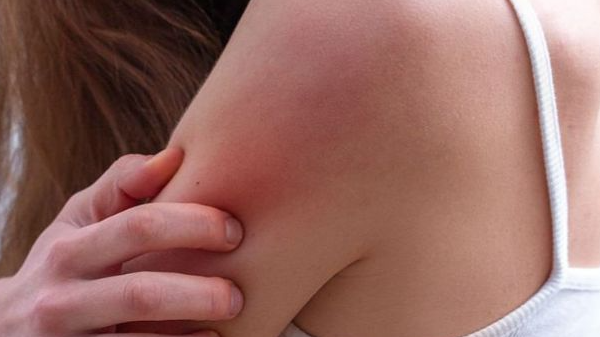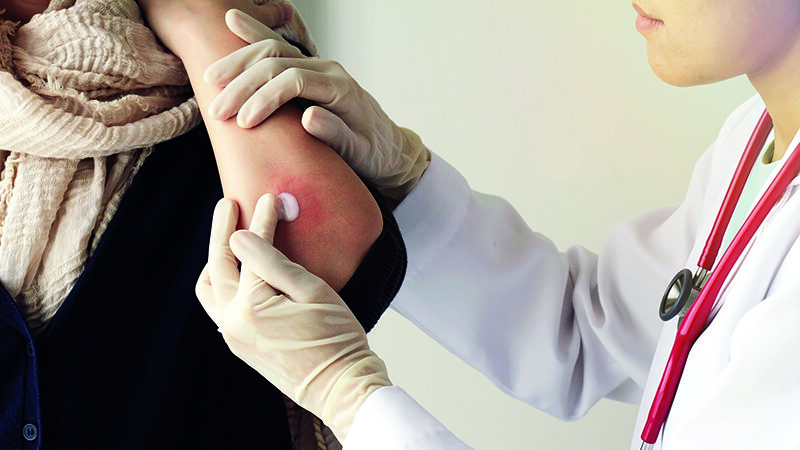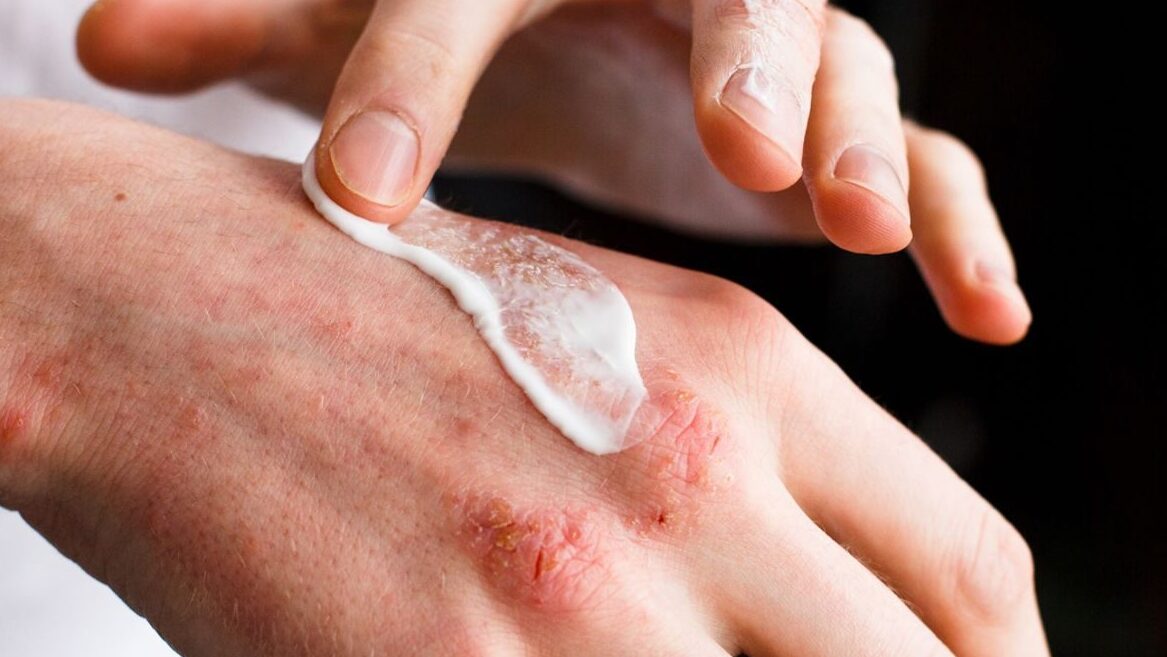MD Insights: Rashes
Developing a rash can be alarming. Often, it leaves patients scratching their heads—and the rash—trying to understand what caused it to occur. James Yost, MD, MBA, Chief Medical Officer at CRH Healthcare, shares what you need to know about rashes.

What Is A Rash?
Sometimes, doctors can be so focused on diagnosing a condition that we neglect to explain the science behind a medical issue a patient experiences.
First and foremost, a rash is an immune response. When your body encounters an irritant, allergen, infection, or some other trigger, it recognizes it as harmful or foreign and subsequently produces a series of chemical responses. Your immune cells often trigger this response by releasing chemicals such as histamine.
Rash Symptoms
The immune response can cause redness, swelling, and warmth. The same response can also stimulate your nerve endings, which results in the characteristic itching and discomfort that accompanies rashes. Now that we know what a rash is, we can look at options for what you should do when you have a rash.
When To Seek Medical Attention for Rash

Most importantly, if a rash is accompanied by difficulty breathing or a fever, please call 911 or visit the emergency room immediately. These are signs of a possible allergic reaction or infection that require prompt treatment.
Additionally, you should seek the care of a medical professional if a rash:
- is painful or infected
- begins to blister
- has open sores
- covers most of your body
- appears in or around the eyes, lips, mouth, or genital region
- is sudden and spreads rapidly
- does not improve in two to five days
How To Treat A Rash At Home

Over-the-counter and at-home remedies may be successful in treating a rash if the rash:
- is localized to one spot or a small area
- comes and goes
- does not continually spread
- is uncomfortable but not painful
- is only slightly itchy
Benadryl
Benadryl, in pill or cream form, is a great choice for managing light inflammation and itchiness.
When taking Benadryl orally to treat a rash, always follow the dosing instructions on the packaging. Typically, the adult dose is between 25-50 mg every four to six hours as needed. For children, the dose will depend on their age and weight. Do not exceed the recommended dosage or frequency without medical advice, which can result in adverse side effects. You can use the medication for as long as necessary to relieve the symptoms; however, if the rash persists or worsens, consult a healthcare professional.
Benadryl is also available in topical forms, such as creams and lotions, designed to be applied directly to the affected skin. When applying topical Benadryl, clean the affected area before application. To properly clean the area without exacerbating symptoms:
- Wash your hands thoroughly with soap and water.
- Wash the affected area with a mild soap and lukewarm water. If you’re unsure which soaps are considered mild, typically, soaps made for infants are gentle and would work well. Clean the rash gently. Do not scrub vigorously, which can worsen irritation.
- After washing, gently pat the area dry with a clean, soft towel.
- Allow the rash to air dry before applying any medication.
Once clean and dry, you can apply topical medication. Again, make sure to follow the instructions on the product label or those given by your doctor. Use the topical Benadryl as often as needed to relieve the itching or irritation. Avoid excessive use as it can actually cause further skin irritation, dryness, and even an allergic reaction if overused. Avoid using rubbing alcohol or hydrogen peroxide. Although these products are often used for cleansing wounds, they may further irritate the skin.
If you experience any adverse effects, see no improvement, or the rash worsens, you should seek medical advice.
Cold Compress
An ice compress is a great solution to relieve itchiness and irritation.
To prepare an ice compress, fill a sealable plastic bag with crushed ice or ice cubes. Add a small amount of water before pressing out as much air as possible and closing the seal. If you don’t have a sealable plastic bag or access to ice, a bag of frozen vegetables, like corn or peas, can also work well.
After preparing the compress, wrap it in a thin, clean cloth or towel. This prevents direct contact between the ice and your skin, significantly lowering the chances of ice burn or further irritation.
When you’re ready, gently place the wrapped compress on the itchy area and hold it there for 10 to 15 minutes. Be gentle and avoid too much pressure.
Keep watch on the skin and be mindful of how it feels. If it starts to become too cold or uncomfortable, remove the compress.
You can repeat this process as necessary throughout the day. It’s best to wait at least 30 minutes between applications, as excessive use of ice can cause further irritation or skin damage.
While this method is great for managing symptoms at home, it does not treat the root cause of the rash.
When paired with an oral antihistamine, an ice compress can be used while monitoring the rash for improvement. If the rash sustains for more than a couple of days, or if its condition worsens, seek professional medical attention.
Colloidal Oatmeal Bath
Colloidal oatmeal is simply finely ground oatmeal that has been suspended in water. This process releases many properties in oats that are beneficial for soothing and treating skin irritation and itchiness. Different elements in colloidal oatmeal provide anti-inflammatory, hydrating, and moisturizing effects in addition to gentle cleansing and pH-balancing. It’s a completely natural and impressively versatile remedy for mild skin conditions and has been used for centuries. There is even evidence of civilizations like the ancient Egyptians and ancient Greeks including it in their bathing rituals.
You can find many affordable colloidal oatmeal options from popular manufacturers and brands in drug stores, grocery stores, or online. It will be labeled simply “colloidal oatmeal” or “bath oatmeal.”
Once you have your colloidal oatmeal, follow the instructions on the packaging. The specific usage guidelines may vary. However, typically, they will be similar to the following:
- Fill your bathtub with lukewarm water (hot water can be an irritant). Then, sprinkle the recommended amount of colloidal oatmeal right into the running water as the tub fills. This will help the mixture spread evenly throughout the bath. After the tub is filled to the desired level, use your hand to gently stir the water one more time. This will ensure the mixture is dispersed evenly throughout. You should now have a soothing, milky bath.
- Lower yourself into the bathtub and soak for 15 to 20 minutes. Make sure to keep the infected area of your skin completely submerged to maximize the effects of the bath. After you’re done soaking, gently rinse yourself off with lukewarm, clean water. Pat your skin dry with a soft towel and allow the affected area to air dry.
You can take colloidal baths as often as necessary to relieve symptoms, but be careful to avoid over-bathing or excessive use, as this can cause the skin to dry out. As mentioned previously, avoid harsh soaps, scrubbing, or any other treatment that is not gentle on the skin. And finally, similarly to the other remedies, this is an effective treatment for managing symptoms at home while waiting to see if the condition improves, sustains, or worsens. If the rash lasts for more than a couple of days or begins to worsen, you should seek medical attention.

MD Insights
James Yost, MD, MBA, MS
Chief Medical Officer at
CRH Healthcare
An Emory alum with 30 years of healthcare experience and 17 years as a practicing physician, Dr. Yost cares deeply about the patient experience inside and outside our centers. Through MD Insights, Dr. Yost answers patients’ most common questions with practical and trustworthy advice.
Feeling Less Than Your Best?
Peachtree Immediate Care is here to help you Get in. Get out. Get better.
No appointments or referrals are necessary. Check in and register online to wait where you want—we’ll text you 20 minutes before your visit. We accept most insurance plans. Please call the center if the patient is under the age of 2 before visiting.
Please call 911 if you are experiencing a life-threatening condition.
